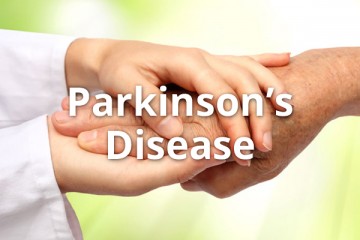Marijuana: The Super Antibiotic Of The Future

A World Wide Emergency
“Without urgent, coordinated action by many stakeholders, the world is headed for a post-antibiotic era,” Dr. Keiji Fukuda, the Assistant Director General for the World Health Organization’s Health Security department, said last year after the WHO released its first ever global report on antibiotic resistance. “Common infections and minor injuries, which have been treatable for decades, can once again kill,” he continued, explaining how antibiotic resistant bacteria are now one of the top health concerns of the world.
The horrible irony is that the evolution of bacteria into “superbugs” is driven in large part by the antibiotics that were designed to treat them in the first place. Methicillin-resistant Staphylococcus aureus (MRSA) for example, which causes over 10,000 deaths each year according to the Center for Disease Control (CDC), is a direct byproduct of over-using antibiotics, which bred a stronger and more dangerous version of the common Staph aureus bacteria.
MRSA, which infects open wounds and increases the chance of death in patients by over 60 percent according to the CDC, is now wreaking havoc in hospitals and other facilities where it can spread easily between people in close contact.
Although MRSA is often associated with those with lowered immune systems, recently there have been outbreaks among healthy populations, including at a New York State high school and even among members of the Buccaneers professional NFL football team – guard Carl Nicks was injured so badly by the infection he had to undergo surgery and ended up losing his place on the team.
The situation has become so severe that in late 2014, President Obama issued an executive order devoted to combating antibiotic resistant bacteria, which he called “a serious threat to public health and the economy.”
Obama even allotted $1.2 billion to the annual budget for the establishment of a special task force devoted to the issue, one that would develop an action plan for stopping the fast spread of antibiotic resistant bacteria like MRSA.
A Game Changing Study
In 2008, however, a first of its kind study conducted by a team of British and Italian researchers had already found that one of the world’s most commonly cultivated plants could stop MRSA in its tracks: marijuana.
Specifically, the team tested five of marijuana’s most common cannabinoids against six different MRSA strains of “clinical relevance”, including epidemic EMRSA strains, which are the ones responsible for hospital outbreaks. They found that every single one of the cannabinoids tested showed “potent activity” against a wide variety of the bacteria.
Cannabinoids are substances unique to the cannabis plant that have wide-ranging medicinal properties: they fight cancer, reverse inflammation and act as powerful antioxidants. Now we know that they are also some of the most powerful antibiotics on earth.
“Everything points towards these compounds having been evolved by the plants as antimicrobial defenses that specifically target bacterial cells,” said Simon Gibbons, one of the authors of the study and head of the Department of Pharmaceutical and Biological Chemistry at the University College London School of Pharmacy, in a follow up interview in the MIT Technological Review.
Amazingly, the cannabinoids even showed “exceptional activity” against a strain of the MRSA that had developed extra proteins for increased resistance to antibiotics, showing that cannabis remained effective despite the bacteria’s adaptations.
“The actual mechanism by which they kill the bugs is still a mystery…” said Gibbons. “I really cannot hazard a guess how they do it, but their high potency as antibiotics suggests there must be a very specific mechanism.”
The researchers recommend cannabis as the source of new and effective antibiotic products that can be used in institutional settings right now.
“The most practical application of cannabinoids would be as topical agents to treat ulcers and wounds in a hospital environment, decreasing the burden of antibiotics,” said Giovanni Appendino, a professor at Italy’s Piemonte Orientale University and co-author of the study.
Since two of the most potently antibacterial cannabinoids were not psychoactive at all and appear in abundance in the common and fast-growing hemp plant, producing the antibiotics of the future could be quick and simple.
“What this means is, we could use fiber hemp plants that have no use as recreational drugs to cheaply and easily produce potent antibiotics,” Appendino concluded.
How is that for an action plan, Obama?
Read the full article here: Reset.me





No Comment